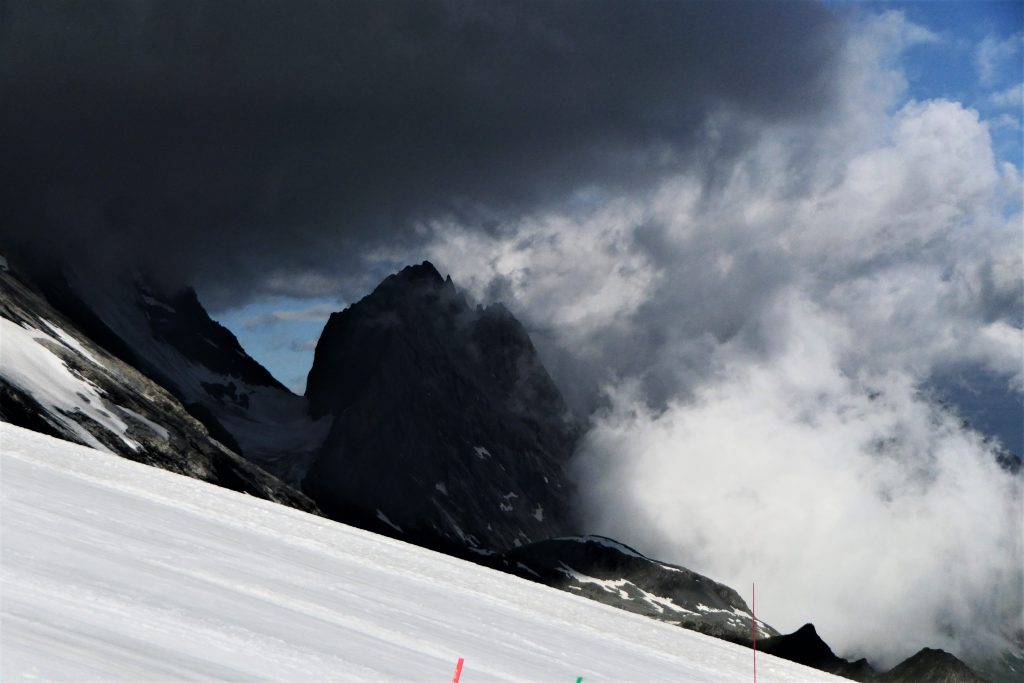What’s most important for Alex is that everything learned in soft snow translates to a performance improvement in hard snow. The first run – on hard snow – (first video clip) shows the improved stance, power, agility and precision – all from yesterday’s step forward.
When the snow became trickier and Alex started to wander off on his own tangents then things began to fall apart – getting stuck back, using leg retraction and exiting the turns with the knees instead of the bust. Seeing all that familiar junk swirling around the obvious answer is to no longer be fooled by any of it – get back on point – exit the turn earlier than you think necessary, leading with the bust.
If you’re going to branch off on a fantasy like “keeping the body in the middle” then just don’t start off on such an erroneous path without at least warning me – PLEASE! The steady body going down the centre line of the poles is an effect not a cause. The skier who exits the existing turn early with the upper body will be the one who appears to keep the body centred – but this is not passive placing of the upper body (with only the legs being worked) – it’s active, dynamic and in fact preemptive on every single turn. It’s one thing doing it reactively but another thing altogether doing it proactively. It’s all based on your awareness of how you project your centre of mass. The visual appearance of this is a form of illusion because the best performance looks the least active.


